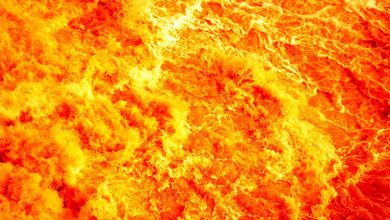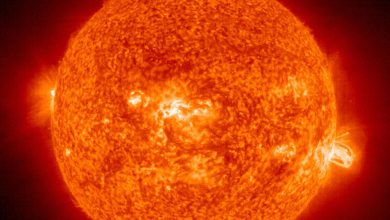Image credit: NASA
Image description: A large gray textured asteroid against a black background. This photograph was taken by the DART probe moments before impact.
For most space scientists, the thought of their satellite hitting an asteroid would set them back. But when NASA’s DART probe did just that shortly after midnight on Tuesday, scientists around the world celebrated their success.
The DART probe was not just any satellite. The size of a large fridge – although a little more expensive at £300million – it has spent the last ten months in space, traveling to its distant target, Dimorphos. Dimorphos is a small moon, or moonlet, orbiting the larger asteroid Didymos. As far as celestial bodies go, it was relatively low-key and even unnamed until two years ago when it was selected as the first asteroid to be rerouted by human intervention. The asteroid itself poses no threat to humanity: its trajectory will never bring it close enough to Earth for it to collide with us. Rather, it is the subject of an experiment to assess whether asteroids can be deflected should one threaten Earth.
The idea of asteroids crashing into our planet and destroying life as we know it has fascinated humans for a long time – no one wants to share the same fate as the dinosaurs. As NASA spokesman Glen Nagle said, “All they could do was look up and say ‘Oh, asteroid’ […] we want to have a better chance. The movies have depicted a variety of potential fixes for a celestial body heading our way, most of which involve blowing up the offending asteroid. Rather than blasting Dimorphos, the DART, or Double Asteroid Redirection Test, involved more of a well-placed boost. The purpose of the collision between the DART probe and Dimorphos was simply to alter the trajectory of the asteroid slightly, which remains a daunting task given its size: Dimorphos is about 160 meters in diameter, the size of 1.5 land football and its weight is estimated at about 5 thousand tons. By comparison, DART is tiny, weighing only half a ton. So how can such a light spacecraft move the orbit of such a large asteroid?
The deflection method is known as “kinetic impact” and is based on the fact that DART transfers both its kinetic energy and momentum to Dimorphos upon impact. A fast-moving spacecraft has a lot of energy, and since DART was moving at around 20,000 kilometers per hour, more than 10 billion joules were transferred to Dimorphos upon impact. When DART hit Dimorphos, all that energy led to the formation of a crater and the blasting of material from the asteroid into space. This ejection of material from the crater pushed the asteroid in the opposite direction, further contributing to alter its orbit.
DART was moving at about 20 thousand kilometers per hour, more than 10 billion joules were transferred to Dimorphos at the time of impact.
All told, Dimorphos’ orbit change is still small: it currently takes the asteroid just under 12 hours to orbit the larger asteroid Didymos, and it is believed that after the DART impact it will will circumnavigate Didymos only a few minutes faster than before. Since target deviation is so small, any mission to land an asteroid on a potential collision course with Earth would have to be done several years in advance for it to work. This project is therefore only part of the efforts of the international space community to protect the Earth from asteroids. The European Space Agency and NASA are tracking and analyzing asteroids thought to be near Earth orbit, and it’s reassuring that none of the larger ones are expected to collide with Earth in the next millennium. However, small asteroids can also cause significant damage. A meteorite about 20 meters in diameter exploded in the atmosphere above Russia in 2013 and sent a shock wave that injured more than a thousand people, mainly from broken glass and walls which are collapsing.
Such occurrences, while frightening, are relatively rare. Publicity around the DART mission has therefore sparked debate, as scientists argue that the threat posed to humanity by climate change is far greater and more likely than that posed by Earthbound asteroids. The parallels with the film Don’t look up, a satire of climate change denial published only last year, are indeed quite striking. In the film, the impending danger posed by an asteroid hurtling towards Earth is generally ignored, until someone discovers a way to make a financial profit from it. Meanwhile, in the real world, it seems to some scientists that the imminent danger posed by climate change is generally ignored, while asteroid deflection gets big funding.
Despite the criticisms, the DART mission is expected to benefit the scientific community in ways other than potential applications for saving Earth. Images of the impact recorded on DART’s travel companion and photographer, the Italian Space Agency’s LiciaCube, and on ground-based telescopes will provide data on the amount of dust released by Dimorphos. The dust cloud will depend on the type of rock that Dimorphos is made of, allowing researchers to learn more about asteroids.
Over the next few weeks, scientists will monitor the asteroid from Earth to see if Dimorphos’ orbit has indeed changed. But in NASA’s eyes, the mission is already a success – it has pushed the concept of our planet’s defense against asteroids out of the Hollywood realm and firmly into real life.
Post views:
241
Related
#Playing #cosmic #pool #NASAs #Dart #probe #crashes #asteroid





